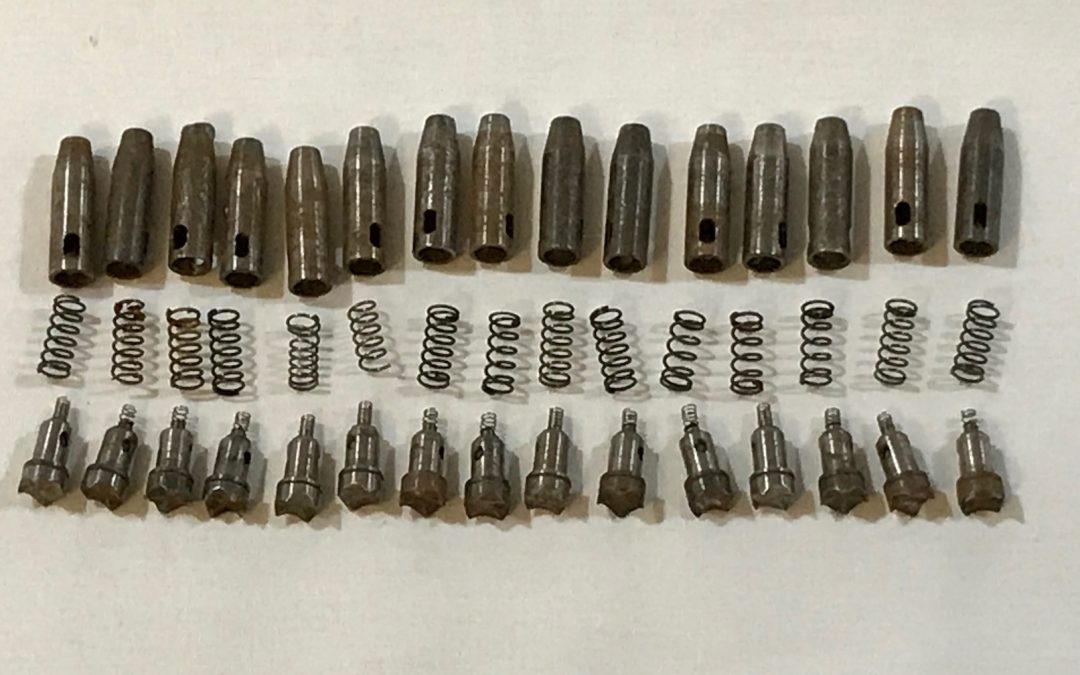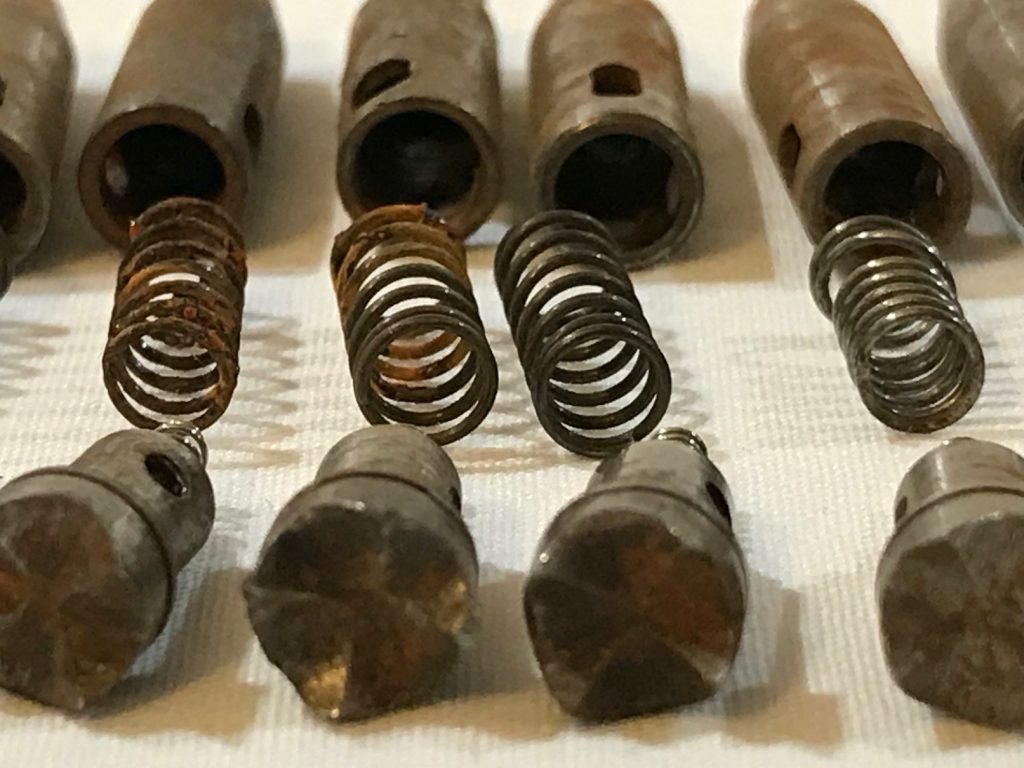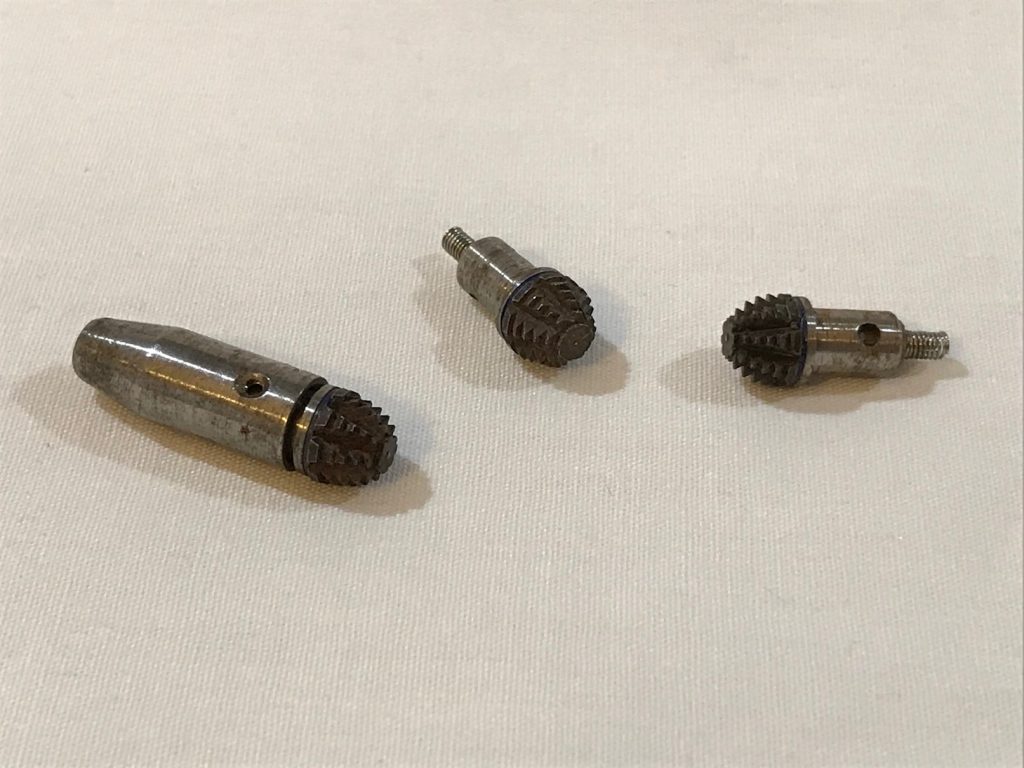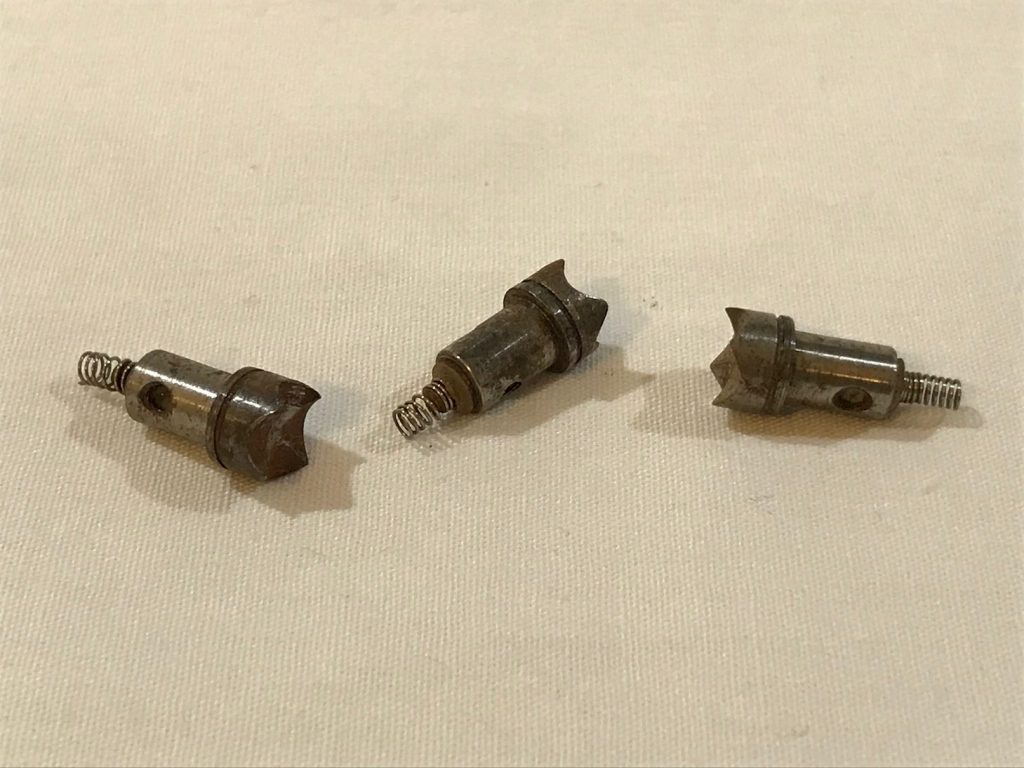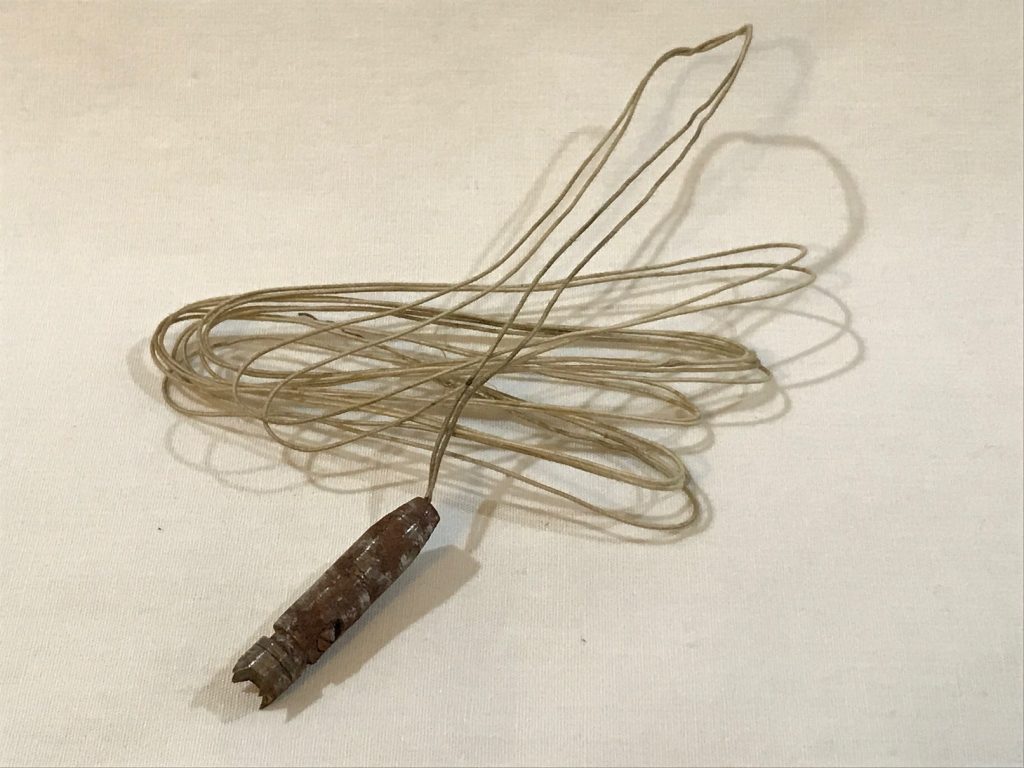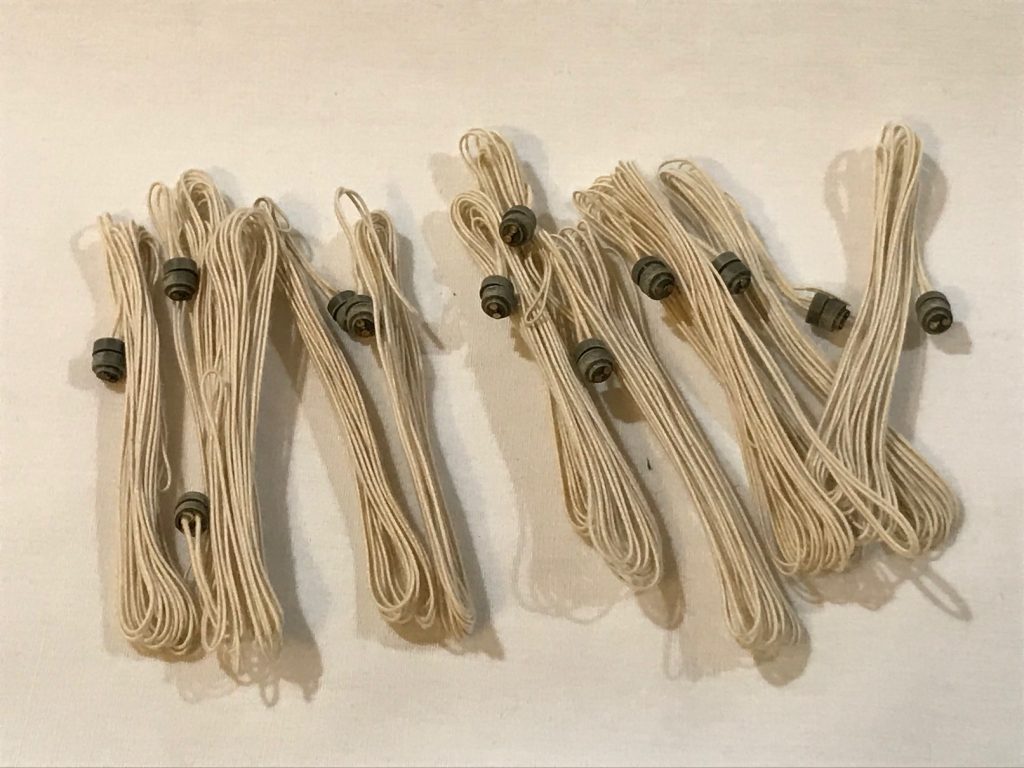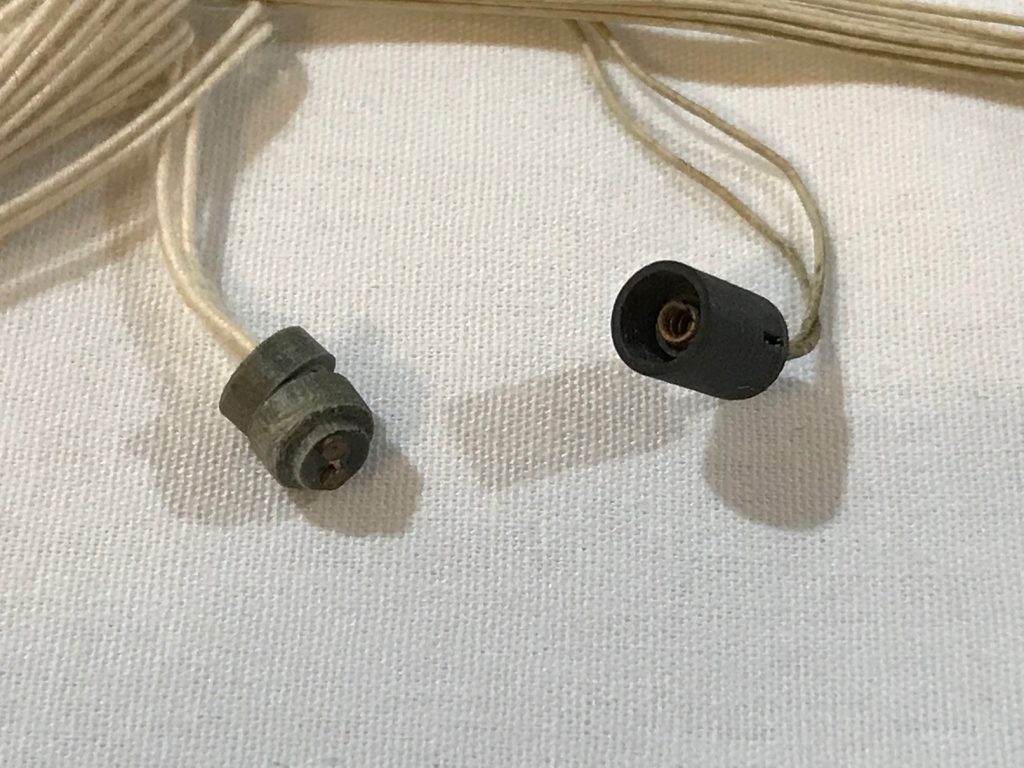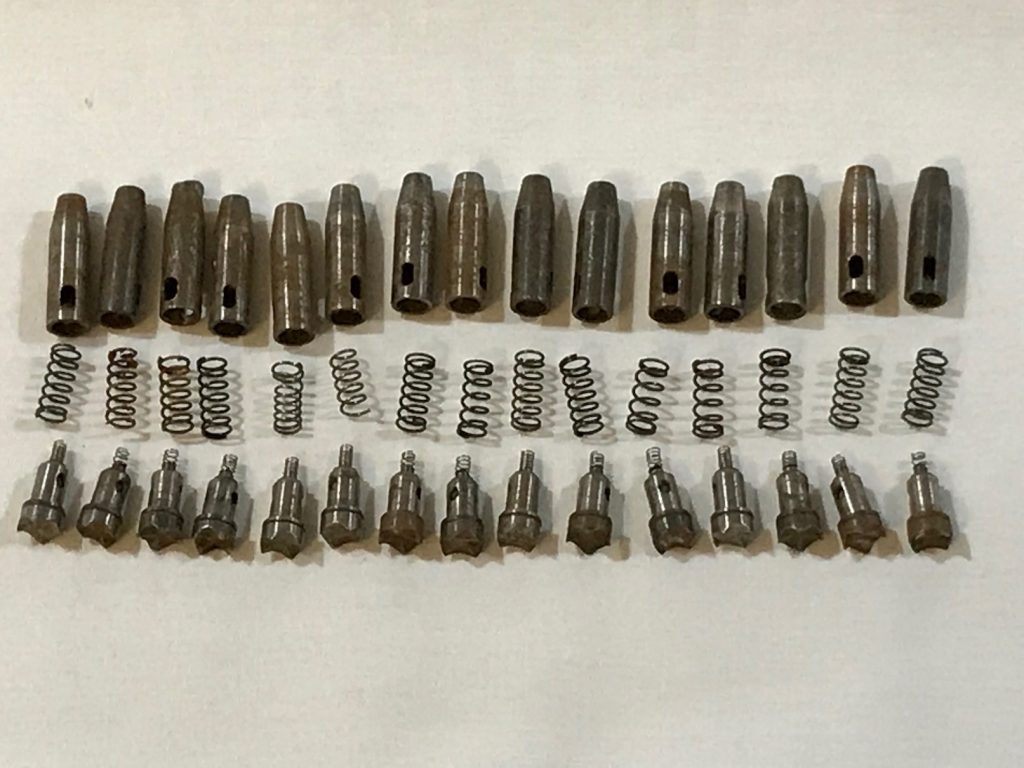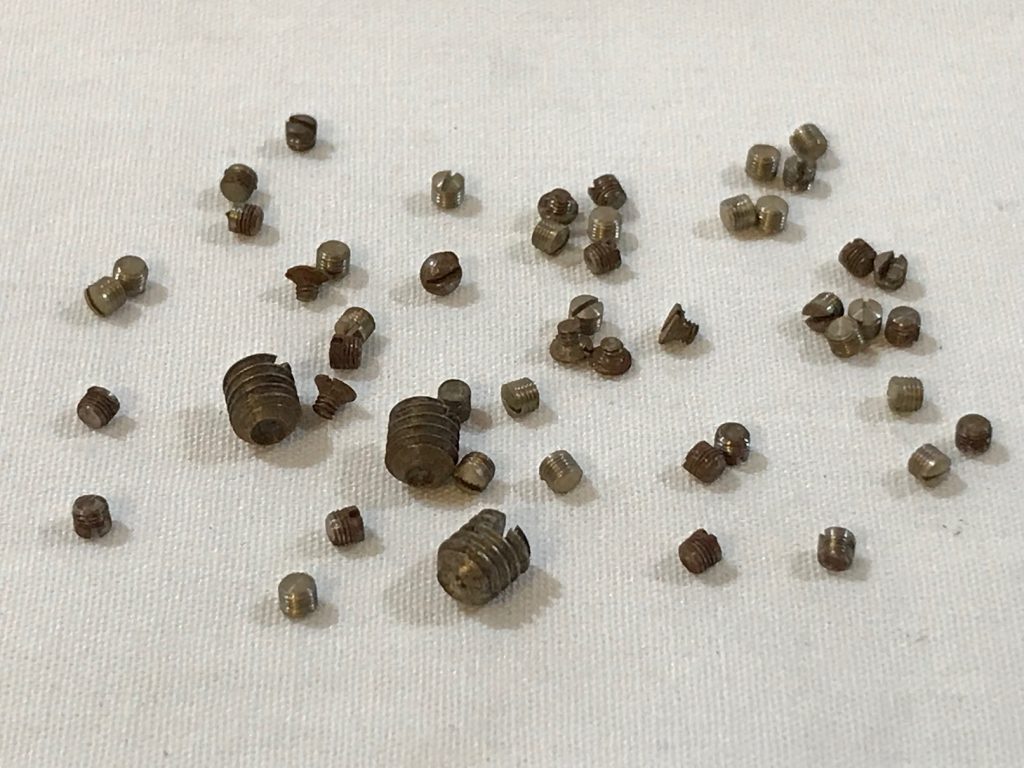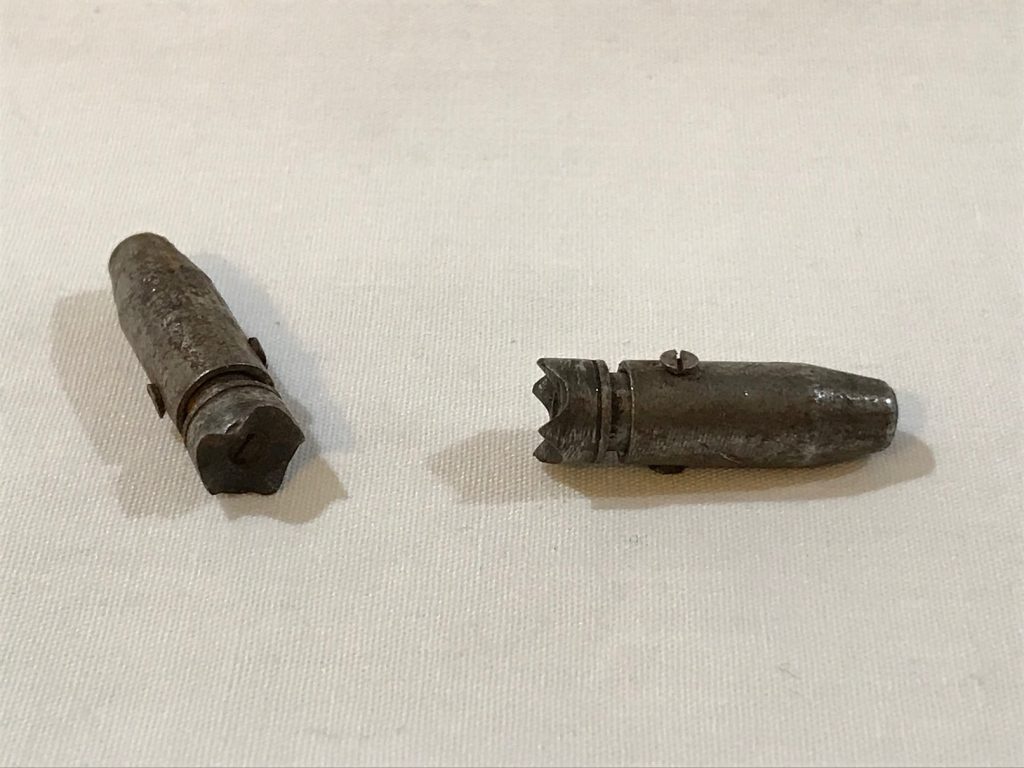One of the intriguing benefits of the donation of the Salvatore Giambra material to The Archive has been checking out his competition weapons from the 1950’s and all the little tiny bits, pieces and parts of the sort that most fencers collect over time. Sal had lots and lots of parts. Really fun parts that I’m making plans to use.
The parts were tucked away in a small metal box with four full drawers of electrical connectors, small screws that looked like they were from an Erector Set, nuts & bolts, and old, rusty foil and epee tips from another, very different era of fencing. Back in the day, before Benjamin Franklin invented electricity, fencers in competition had to rely on other humans seeing their hits upon the person of their opponent. For foil and sabre, this was strictly a visual exercise. Epee fencing added a layer of complexity to the scoring rigmarole. A small metal trident was affixed to the business end of the epee. It was a fairly sharp little thing that had enough pointy edge to grab onto any jacket it got near. Additionally, a tiny cotton ball could be nestled into the middle of the three points to which would be added a little red dye so that hits not only grabbed the jacket, it also left a little red spot behind. That gave the officiating crew the chance to search for the tell-tale red dye on the presumably be-struck fencer to confirm (or dismiss) the notion of a scoring hit. The dye could then be counteracted by rubbing it with a rag dipped in lemon juice, making the pure white cotton duck ready for the next pass.
When electric fencing was introduced, epee fencers became the guinea pigs for proving both the theory and technology of awarding hits via machine. The most well publicized event to use the new scoring apparatus was the Berlin Olympics in 1936. The adaptation stuck, although non-electric tournaments continued for some time as the technology proliferated.
Now we get to the fun part of my recent archeological dig through Sal Giambra’s metal box of parts. I had some prior knowledge of electric tip development, but my knowledge didn’t really go very far. I did know about this:
The ever intriguing “pineapple tip”. I’d never thought about them as having been in use for both foil and epee, but I think that’s just the innate prejudice of a foil fencer combined with never needing to know. These tips were long out of style by the time I came to the sport in the late 1970s. But that wasn’t the most interesting find in the box. These tips I’d never seen before:
These pointy little guys are epee tips. They must have been the first style of post-point d’arret electric tips, or at least, I so posit. They’re similar enough to the point d’arret in design and, presumably, function, that I don’t see where else they could fall on a timeline.
That’s a complete epee tip with the wire. But I don’t have just the one wire in this batch of material. Oh, no. It’s like a holiday raining electric fencing parts! I wonder what holiday that would be? I need to make one up.
I’ve got a bundle of epee wires! There’s twelve here and two more like the one below on the right.
Plus:
Barrels, springs, and…
…a couple of different kinds of little tiny screws. And some set screws that belong I’m not sure where yet. I’m guessing the barrel shaped screws are for the epees and the ones with the tapered heads are for foil. Magnifying headset and experimentation is ahead.
Here’s what I’m getting at. I’ve got everything I need to wire up some new blades with these parts and see if I can’t try out what some old school electric epee fencing was like.
Now, I have a couple of foil tips also, but I’m less enamored with the idea of tearing up an old lame with these things. Old jackets are more expendable, so I’ll probably stick with epee for this experiment. Not to mention I’d have to make the foil wires if there are wire caps in the barrel. Still, the first step is going to be getting the epee parts cleaned up for action. There is an accumulation of rust on everything except the wires, so I’ll have to put some elbow grease into making a couple sets look like new. Then, it’ll be off to my personal armorer, Cole Harkness at Victory Fencing Gear. (Free advertising!). I’ll get him to assemble this after I prep all the materials and determine which wires work with which tips. Hopefully I’ll be fairly obvious.
I’m fascinated to learn exactly how different using these tips might change the game. I can’t help but think that getting hit with these tips will be a different physical sensation compared with a hit from the modern flat-faced tip. That may or may not be significant; I’ll have to wait and see. The other aspect is the “grab” of the prongs onto the surface material of the fencing outfit. If the travel of the mechanism is smooth and even, then an attack with current epee tips that could slide over the target without registering a hit may well grab hold as it passes over the surface – and turn on a light. At least, that’s my assumption. Since there aren’t too many folks around that might speak to this, it seems this will need to be experimented with.
So I think I’m in Phase One. I’ll move onto Stage Two and when I have something fun to report, I’ll check in on this topic again. Eventually I’ll need to find a guinea pig accomplice training partner to take this experiment through to its conclusion.
Once again, my thanks go out to Gina Giambra, Jessica Smith, Chuck Lucasey and David Wessel.

